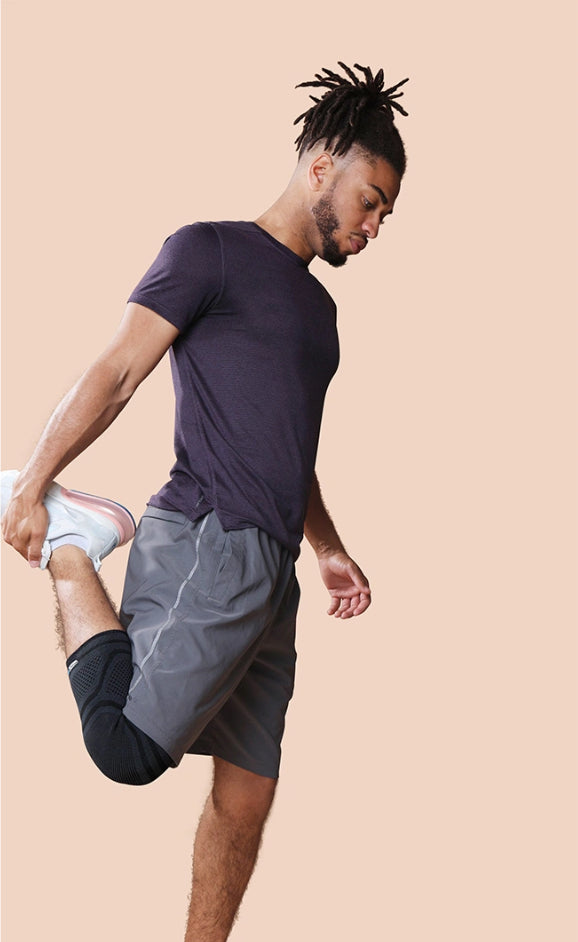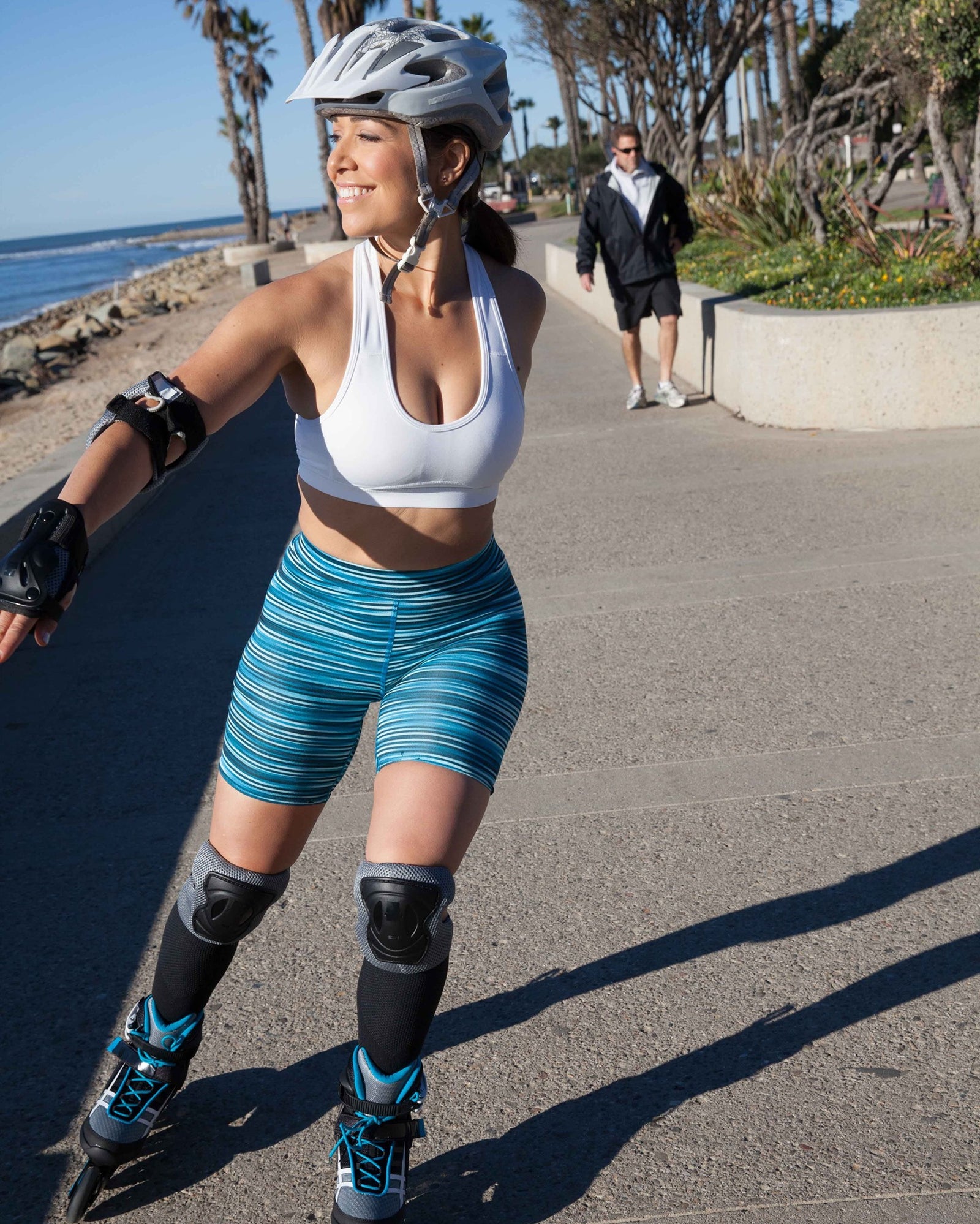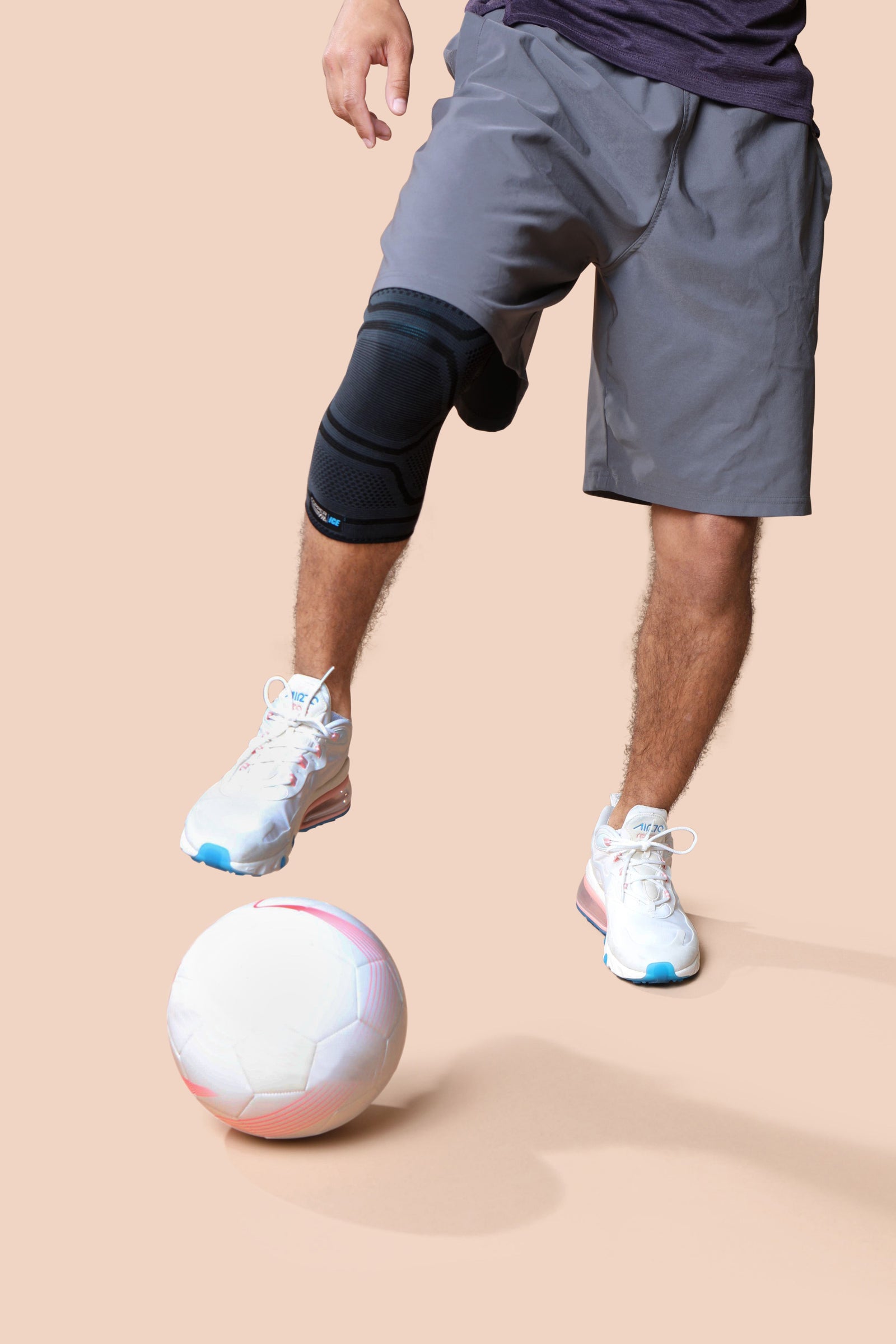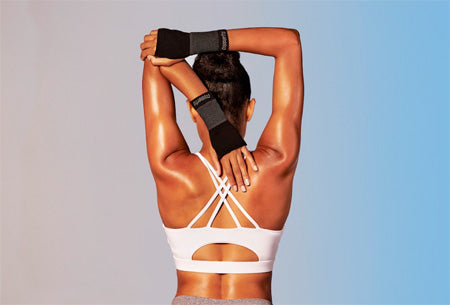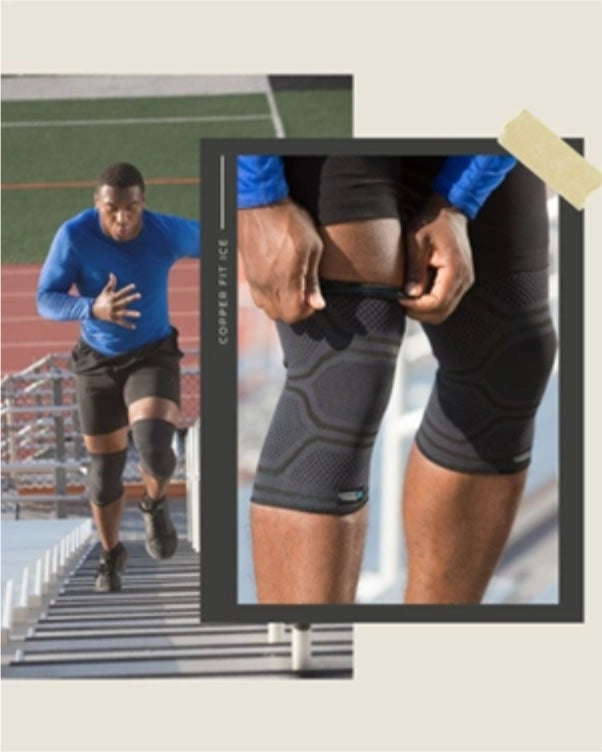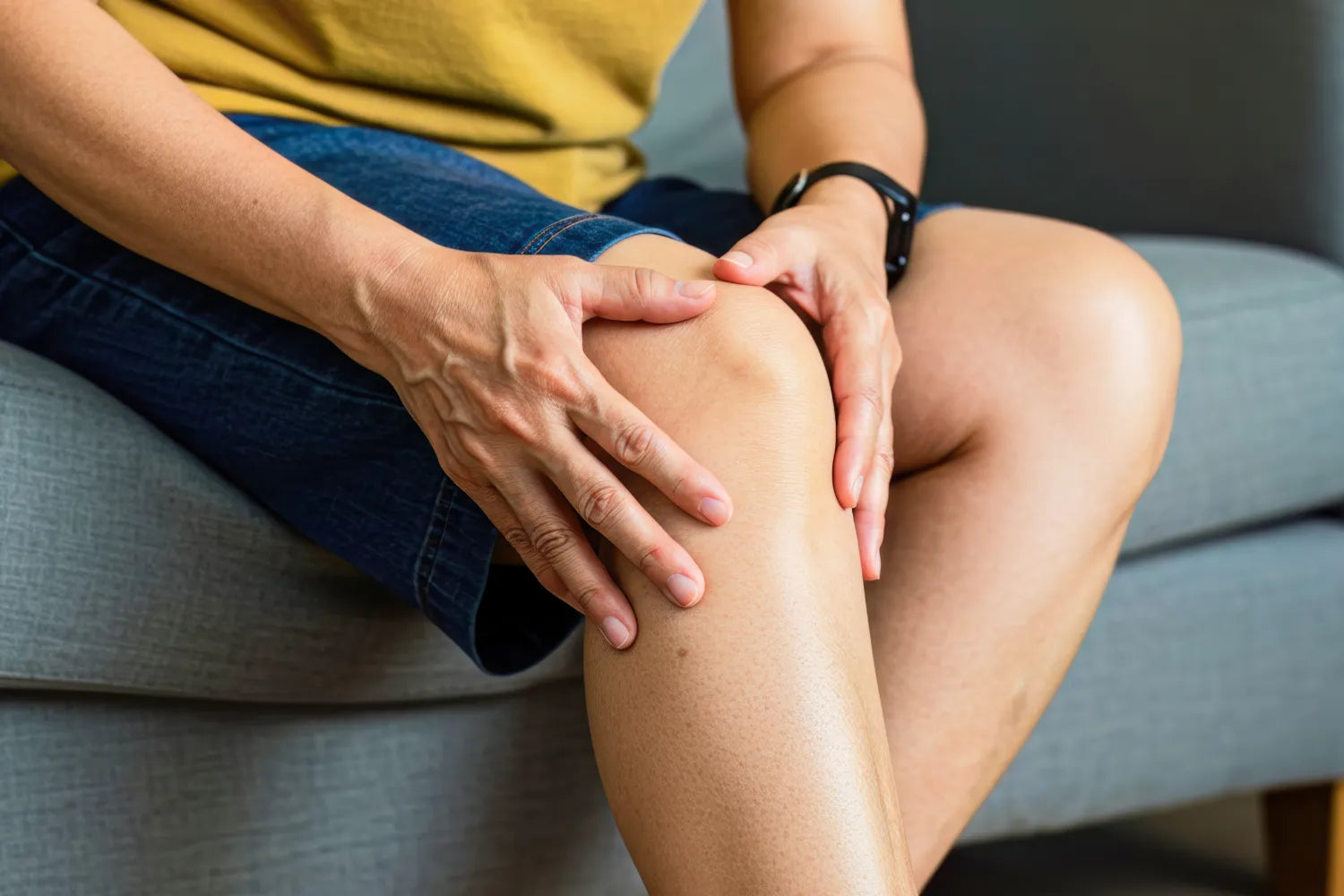
Key Takeaways
- A knee sprain involves overstretched ligaments, while a knee tear is a more severe injury where the ligament or tendon sustains partial or full rupture.
- Compression sleeves and knee braces can support healthy blood flow, provide joint stability, and promote confidence during both activity and recovery.
- Building strength, improving flexibility, and listening to early signs of soreness are effective ways to prevent knee injuries and maintain long-term mobility.
The knee is one of the most important joints in the body for movement, stability, and overall activity. Whether you’re an athlete, a weekend runner, or simply someone who enjoys staying active, your knees play a vital role in almost everything you do. Because of their constant use and the load they carry, they’re also highly vulnerable to injury.
Two of the most common types of knee injuries are sprains and tears. These conditions may sound similar, but they differ in severity, recovery, and the way they impact your ability to move. Knowing the difference can help you respond quickly, manage discomfort, and return to activity with confidence.
Knee Anatomy: The Basics
To understand how sprains and tears occur, it helps to know a little about knee anatomy. The knee is the largest joint in the body, connecting the thigh bone (femur) to the shin bone (tibia).
Several structures stabilize and support this joint:
-
Ligaments: Strong, fibrous bands of tissue that connect bone to bone. Key ligaments in the knee include the anterior cruciate ligament (ACL), posterior cruciate ligament (PCL), medial collateral ligament (MCL), and lateral collateral ligament (LCL).
-
Tendons: Tissue that connects muscles to bones, such as the quadriceps tendon and patellar tendon.
-
Cartilage: Smooth tissue, like the meniscus, that cushions and stabilizes the knee during movement.
-
Muscles: The quadriceps, hamstrings, and surrounding muscles help control and protect the joint.
Because the knee bears weight, absorbs shock, and allows for bending, twisting, and sudden stops, it is one of the most injury-prone joints. Understanding the difference between a sprain and a tear begins with knowing how these structures respond under stress.
Knee Sprain vs. Knee Tear: What’s the Difference?
Let’s break down the difference between these two types of knee injuries.
Knee Sprain
A sprain occurs when a ligament in the knee is stretched beyond its normal range. This can cause small fibers within the ligament to tear, but the overall structure remains intact.
Sprains are generally classified by grade:
-
Grade 1 (Mild): Slight stretching of the ligament with minimal instability.
-
Grade 2 (Moderate): Partial tearing of the ligament, leading to more noticeable swelling and discomfort.
- Grade 3 (Severe): Complete ligament tear, though in many cases this is referred to as a tear rather than a sprain.
Symptoms of a sprain may include swelling, mild to moderate soreness, stiffness, and difficulty bearing weight, depending on severity.
Knee Tear
A tear is a more significant injury involving a partial or complete rupture of a ligament or tendon. For example, a torn ACL or meniscus often requires a longer recovery period and may limit mobility more severely.
Tears can cause:
- A popping sensation at the moment of injury.
- Immediate swelling and instability.
- Sharp discomfort that worsens with movement.
- Limited range of motion or difficulty supporting weight.
Unlike mild sprains, tears often require medical imaging (like an MRI) to confirm diagnosis and guide treatment. Severe tears may involve surgical intervention, while others can be managed with rest, structured rehabilitation, and physical therapy.
When To Seek Medical Attention
Not all discomfort in the knee indicates a tear, but warning signs like severe swelling, sudden instability, or inability to bear weight should not be ignored. Early evaluation ensures proper treatment and helps prevent worsening of the injury.
How To Tell the Difference Between a Sprain and a Tear
Distinguishing between a knee sprain and a tear can be challenging since both can cause swelling, stiffness, and discomfort. The key difference often comes down to severity and how the joint functions after the injury.
A sprain typically results in mild to moderate soreness, limited swelling, and a feeling of stiffness that may improve with rest and compression. Movement is usually possible, though it may feel restricted or uncomfortable.
A tear, on the other hand, is often marked by a sudden popping sensation, rapid swelling, and a sharper, more pronounced discomfort. The knee may feel unstable or unable to bear weight, and in some cases, mobility becomes severely limited.
While mild sprains often improve in a matter of weeks with proper care, tears generally require medical evaluation to confirm the extent of damage and to develop a treatment plan. If instability is present or recovery is not progressing, it’s important to consult a healthcare professional for guidance.
What Are the Common Causes and Risk Factors for Knee Injuries?
Knee sprains and tears often occur due to similar types of movement, but certain scenarios increase the likelihood:
-
Sudden pivots or twists: Quick directional changes in sports like basketball, soccer, or tennis.
-
Awkward landings: Jumping or landing unevenly places strain on ligaments.
-
Repetitive stress: Overuse from running, squatting, or high-intensity training without proper rest.
-
Weak or imbalanced muscles: Lack of support from surrounding muscles increases stress on the joint.
- Environmental factors: Uneven ground, slippery surfaces, or unstable terrain can increase the risk of a strain.
Improving strength, flexibility, and stability significantly reduces vulnerability to both sprains and tears.
Tips for Managing and Preventing Knee Injuries
Sprains and tears are not always avoidable, but you can take proactive steps to protect your knees. Prevention is about strengthening supportive tissues, building flexibility, and using recovery tools to manage soreness and tension.
Strength and Flexibility
Strong quadriceps, hamstrings, and glutes stabilize the knee during activity. Squats, lunges, bridges, and hamstring curls all build supportive muscle. Flexibility in the hips and calves also helps keep movement patterns smooth and reduces strain on ligaments.
Compression Gear
Knee sleeves and braces provide gentle, targeted support during activity. Compression helps support healthy blood flow, keeps the joint stable, and promotes confidence in movement. These tools can also assist with recovery by helping to soothe discomfort after strenuous activity or long runs.
Recovery Practices
Simple steps, like stretching after workouts, staying hydrated, and nourishing the body with protein and electrolytes, support natural repair. Hot and cold therapy is another helpful tool: cold can be used in the first day or two after a sudden strain to calm swelling, while heat is better for ongoing tension or stiffness once initial irritation has eased.
Active Rest
Resting doesn’t always mean stopping completely. Activities such as swimming, cycling, or walking can keep the body moving while giving the knees time to recover from higher-impact exercise.
Listen to Early Signals
Discomfort, swelling, or stiffness are the body’s way of signaling stress. Paying attention to these cues and responding with rest, compression, or modified activity reduces the chance of minor sprains developing into something more serious.
Recovering From Knee Injury: What To Expect
Recovery timelines vary based on whether you’re dealing with a sprain or tear, but the principles remain the same: patience, consistency, and gradual progress.
-
Sprains: Mild sprains may resolve in a few weeks with rest, compression, and strengthening. Moderate sprains can take longer, especially if the ligament fibers need more time to heal.
- Tears: Partial or full tears can take months of structured rehabilitation, often guided by a physical therapist. Some severe tears require surgery before recovery begins.
Beyond rest and treatment, lifestyle choices play a big role. Quality sleep allows the body to repair tissues, while stress management helps reduce overall muscle tension. Incremental training adjustments ensure that the knee adapts rather than being overwhelmed.
With the right approach, it is possible to return to your favorite activities stronger and more resilient.
FAQs
How do I know if my knee injury is a sprain or a tear?
A sprain often feels like soreness or stiffness with swelling, while a tear may cause a popping sound, sharp discomfort, and instability. A medical professional can provide an accurate diagnosis using physical tests and imaging.
Is it safe to run with a knee sprain?
Running with a mild sprain is not recommended until swelling has eased and mobility has returned. Light, low-impact exercise may be a better option during early recovery to avoid worsening the injury.
Do knee sleeves really help prevent injuries?
Knee sleeves and braces don’t make you injury-proof, but they do provide supportive compression that helps stabilize movement, promote circulation, and soothe soreness. They are most effective when combined with strength training, proper form, and recovery habits.
The Bottom Line
Here at Copper Fit, we believe everyone deserves to stay active, feel strong, and recover smarter. We understand the challenges of knee sprains and tears, and we’re committed to creating supportive tools that help you keep moving.
Our compression gear is designed to provide stability, help soothe discomfort, and support the body’s natural recovery process, so you can get back to doing what you love with confidence.
Sources:
Knee Joint: Function & Anatomy | Cleveland Clinic
Repetitive Strain Injury (RSI): Causes, Symptoms & Treatment | Cleveland Clinic
Compression Clothing and Circulation Benefits | UPMC HealthBeat

